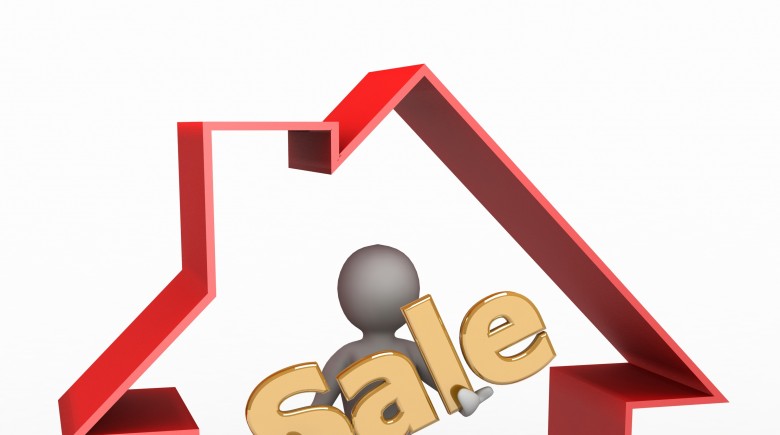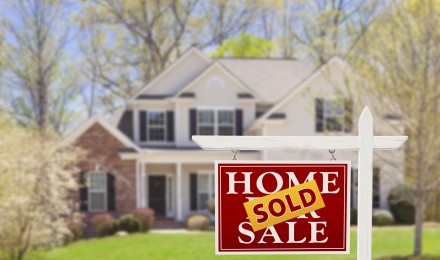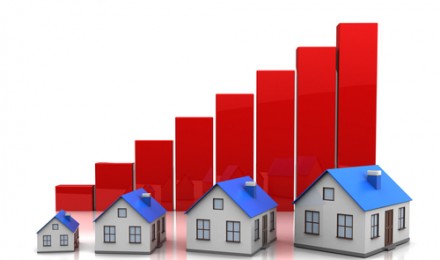The National Association of Realtors reports that existing home sales increased a seasonally adjusted rate of 4.2 percent in May—an annual pace of 5.18 million. It exceeds the 4.97 million pace of April and is 12.9 percent higher than the 4.59 million level reached in May 2012. The reading beats the median estimate of 5 million made by economists responding to the Bloomberg survey.
In addition, the median sales price increased the most, on a year-to-year basis, since October 2005, according to the NAR. Home sales rose in all four regions. The Midwest had an 8 percent gain in the sale of previously owned homes and sales in the South rose 4 percent.
The existing-homes sales indicator tracks completed transactions consisting of single-family homes, townhomes, condominiums and coops.
Short-term forecast
NAR’s chief economist Lawrence Yun said in a statement that he expects the economy to continue to gain strength. However, the housing inventory will continue to be limited for the remainder of the year in many areas of the country.
“The housing numbers are overwhelmingly positive,” said Yun. Buyers will not find more homes for sale “unless new home construction ramps up quickly by an additional 50 percent” according to Yun. The only way to slow down home price acceleration is to increase supply—particularly for new homes— which will help “moderate future price growth.”
That would require an annualized rate of 1.5 million units for housing starts to “help temper home-price gains,” said Yun.
Inventory and prices
The inventory of available homes increased 3.2 to 2.22 million homes available for sale. The 5.1 month supply declined from 5.2 months in April. The inventory level is 10.1 percent lower than May 2012, which registered a 6.5 month supply.
The median price of homes rose to $208,000—a 15.4 percent increase over May last year. Homes prices have experienced double-digit increases for six straight months. It’s the strongest posted gain since October 2005. At that time, home prices increased 16.6 percent from the preceding year. From March 2005 to May 2006, year-over-year-prices increased 15 consecutive months.
The number of distressed home sales—foreclosures and short sales—remained stable consisting of 18 percent of the total transactions—the same as April. Foreclosed homes made of 11 percent of the volume and short sales 7 percent. Foreclosure buyers receive an average discount of 15 percent. Short sales buyer received an average discount of 12 percent.
Brian Jones, a senior U.S. economist with Societe Generale in New York said, “The residential real-estate market in the U.S. is on fire. Ultimately, I think it’s a sign of confidence in the U.S. economy,” said Jones. Jones predicted a 5.17 million annual rate for existing home sales.
Other housing data
Existing-home sales peaked at a record high of 7.08 million units in 2005. The indicator dropped to a 13-year low of 4.11 million units in 2008
Newly built houses will climb to an annualized rate of 400,000 units in May. It’s the highest level since July 2008, based on the consensus forecast of economists responding to the Bloomberg survey—ahead of the June 25 Commerce Department report. Earlier this week Commerce Department data show housing starts increased to a pace of 914,000 units.
The National Association of Realtors reports that existing home sales increased a seasonally adjusted rate of 4.2 percent in May—an annual pace of 5.18 million. It exceeds the 4.97 million pace of April and is 12.9 percent higher than the 4.59 million level reached in May 2012. The reading beats the median estimate of 5 million made by economists responding to the Bloomberg survey.
In addition, the median sales price increased the most, on a year-to-year basis, since October 2005, according to the NAR. Home sales rose in all four regions. The Midwest had an 8 percent gain in the sale of previously owned homes and sales in the South rose 4 percent.
The existing-homes sales indicator tracks completed transactions consisting of single-family homes, townhomes, condominiums and coops.
Short-term forecast
NAR’s chief economist Lawrence Yun said in a statement that he expects the economy to continue to gain strength. However, the housing inventory will continue to be limited for the remainder of the year in many areas of the country.
“The housing numbers are overwhelmingly positive,” said Yun. Buyers will not find more homes for sale “unless new home construction ramps up quickly by an additional 50 percent” according to Yun. The only way to slow down home price acceleration is to increase supply—particularly for new homes— which will help “moderate future price growth.”
That would require an annualized rate of 1.5 million units for housing starts to “help temper home-price gains,” said Yun.
Inventory and prices
The inventory of available homes increased 3.2 to 2.22 million homes available for sale. The 5.1 month supply declined from 5.2 months in April. The inventory level is 10.1 percent lower than May 2012, which registered a 6.5 month supply.
The median price of homes rose to $208,000—a 15.4 percent increase over May last year. Homes prices have experienced double-digit increases for six straight months. It’s the strongest posted gain since October 2005. At that time, home prices increased 16.6 percent from the preceding year. From March 2005 to May 2006, year-over-year-prices increased 15 consecutive months.
The number of distressed home sales—foreclosures and short sales—remained stable consisting of 18 percent of the total transactions—the same as April. Foreclosed homes made of 11 percent of the volume and short sales 7 percent. Foreclosure buyers receive an average discount of 15 percent. Short sales buyer received an average discount of 12 percent.
Brian Jones, a senior U.S. economist with Societe Generale in New York said, “The residential real-estate market in the U.S. is on fire. Ultimately, I think it’s a sign of confidence in the U.S. economy,” said Jones. Jones predicted a 5.17 million annual rate for existing home sales.
Other housing data
Existing-home sales peaked at a record high of 7.08 million units in 2005. The indicator dropped to a 13-year low of 4.11 million units in 2008
Newly built houses will climb to an annualized rate of 400,000 units in May. It’s the highest level since July 2008, based on the consensus forecast of economists responding to the Bloomberg survey—ahead of the June 25 Commerce Department report. Earlier this week Commerce Department data show housing starts increased to a pace of 914,000 units.







